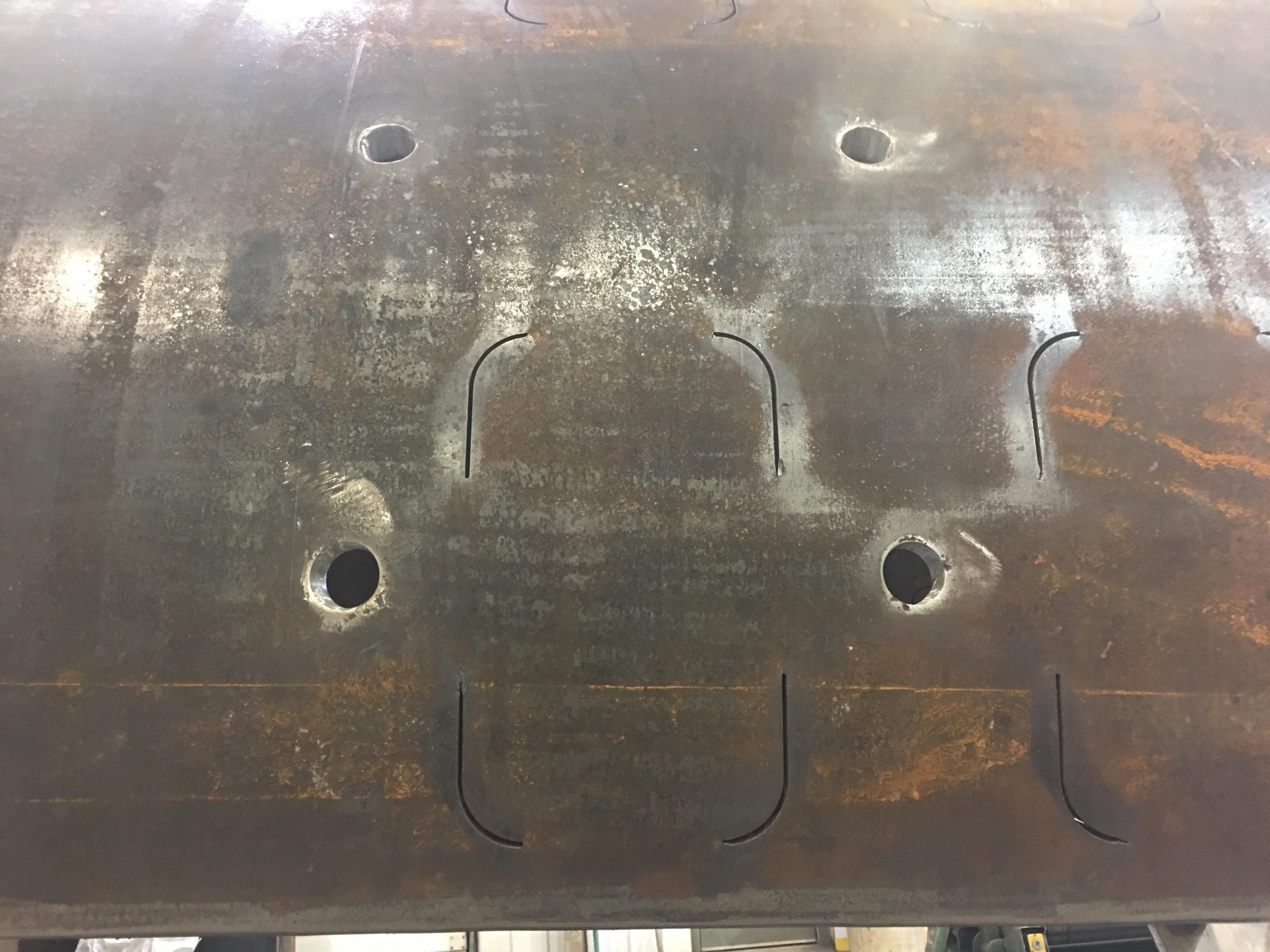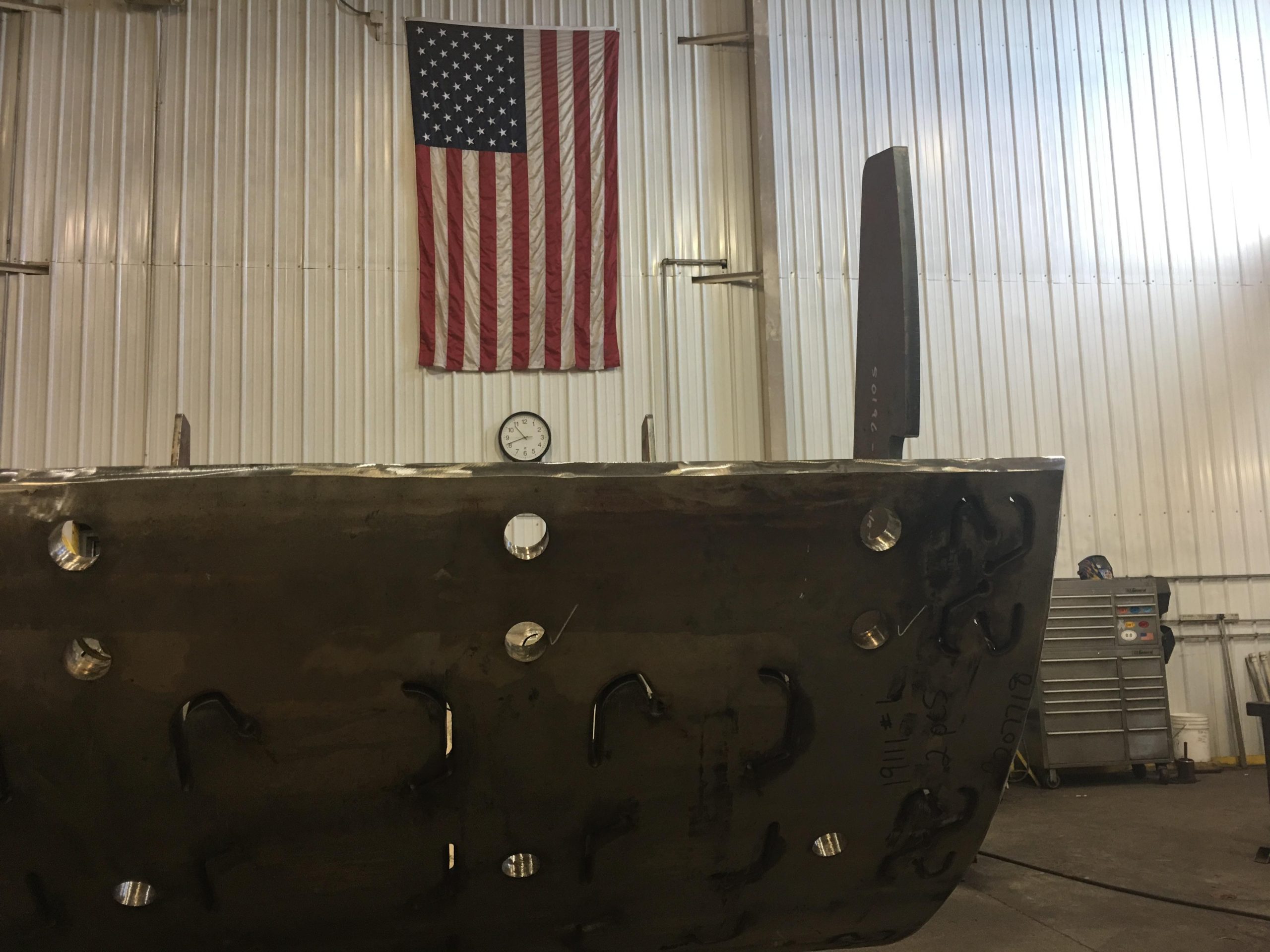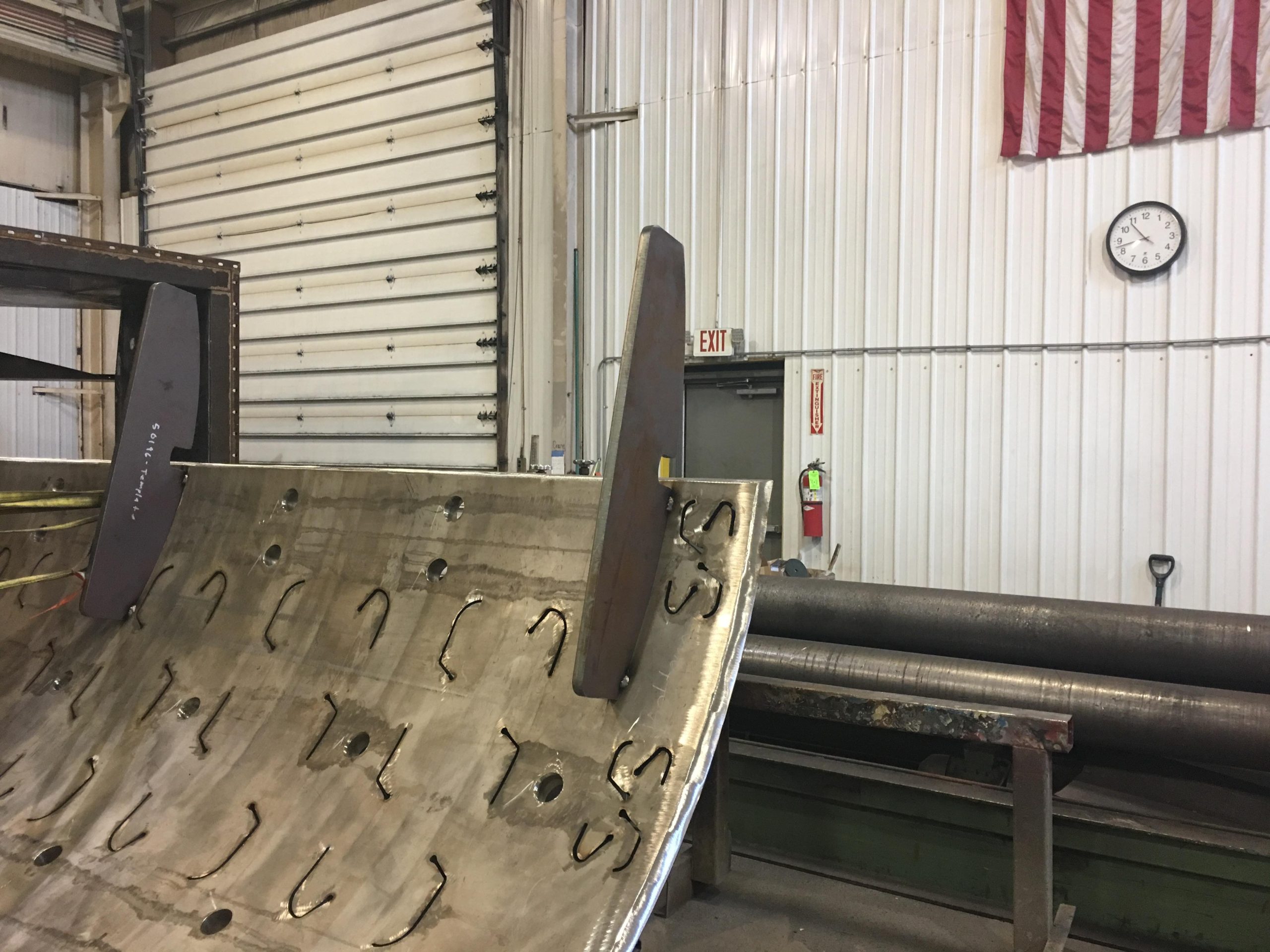Welding Carbon Steel to Stainless Steel

Stainless steel can be the steel of choice for many applications, but when it comes to heavy fabrication, the cost of creating large pieces entirely from stainless can be cost prohibitive.
Creating non-essential parts and framework from a lower costing carbon steel can help reduce the overall costs of larger fabrication projects.
This creates an opportunity for engineers to only use stainless steel in specific areas, for instance in areas of high heat or corrosive areas, then matching unspecified areas to a mild steel.
Joining carbon steel and stainless steel isn’t exactly unique, but special attention is needed to the details of heat, filler materials, and joint design for the two metals to weld together for a strong bond.
The preparation and planning of joining two dissimilar metals together take an experienced team of welders and fabricators to make sure it’s done properly.

Welding Dissimilar Metals

Swanton Welding was asked to fabricate two furnace shells made of A36 Carbon Steel and 304L Stainless Steel. We have worked with this customer previously, and they are well aware of our large fabrication capabilities and the advanced welding ability of our team.
Swanton Welding Company has the capability to cut up to 1 ½ inch thick stainless steel.
Due to the thickness of the plate, we beveled the edges to create more surface for the weld surface area to ensure a strong bond between the pieces of the project.
We were able to cut the thick stainless-steel plate needed, however, we partnered with other companies to roll the plate to the desired shape.
Tools Of The Trade

Lots of layout and measuring tools were used to build the project. Levels, squares, tape measures, strong lines, clamps, and other tools were critical to the build.
We also made extensive use of our overhead crane to move the pieces around the shop as the project moved into various phases.
Most of the fabrication is heavy plate requiring multiple passes of weld to achieve the required weld size. FCAW welding process was chosen for the project.
Flux-cored arc welding (FCAW) is a semi-automatic welding process that is much quicker than Gas Tungsten Arc Welding (GTAW) and allows for higher deposition rates.
GTAW is a slower, controlled, manual process for welding and not used as often in large fabrication.
Setting the Temperature
A portion of the project has dissimilar metals being joined: Austenitic stainless steel to A36 mild steel. Joint preparation is critical along with root openings, pre-heat, and max interpass temperatures.
Heat input on stainless has to be closely monitored. Heat needs to be controlled and the time in the sensitization temperature range needs to be as short as possible. Too much heat, the heat affected areas will have reduced corrosion resistance. Careful preparation and attention to detail were essential for this project.
Welding of the dissimilar metals also requires different filler metals. Stainless electrodes with higher alloy content are used so the admixture of the mild steel into the stainless weld deposit does not form an unsatisfactory alloy. Swanton used E309 as it is the commonly used filler metal for joining mild steel to 304 stainless steel.

Finishing Touches
Once the fabrication is welded, it is cleaned manually then sent down for blasting. Again, because of the size, Swanton’s heavy equipment cranes are used to transport the shell to the blasting booth.
After it is blasted, it heads to paint for an exterior finish. Once completed, the project will be completely assembled for customer inspection.
At Swanton Welding, we like to be challenged. Whether it’s the challenge of different welding materials and metals or the challenge of large-scale fabrication, we are equipped to meet the needs of your next project.
We encourage you to contact us today for a quote on your next fabrication project.

